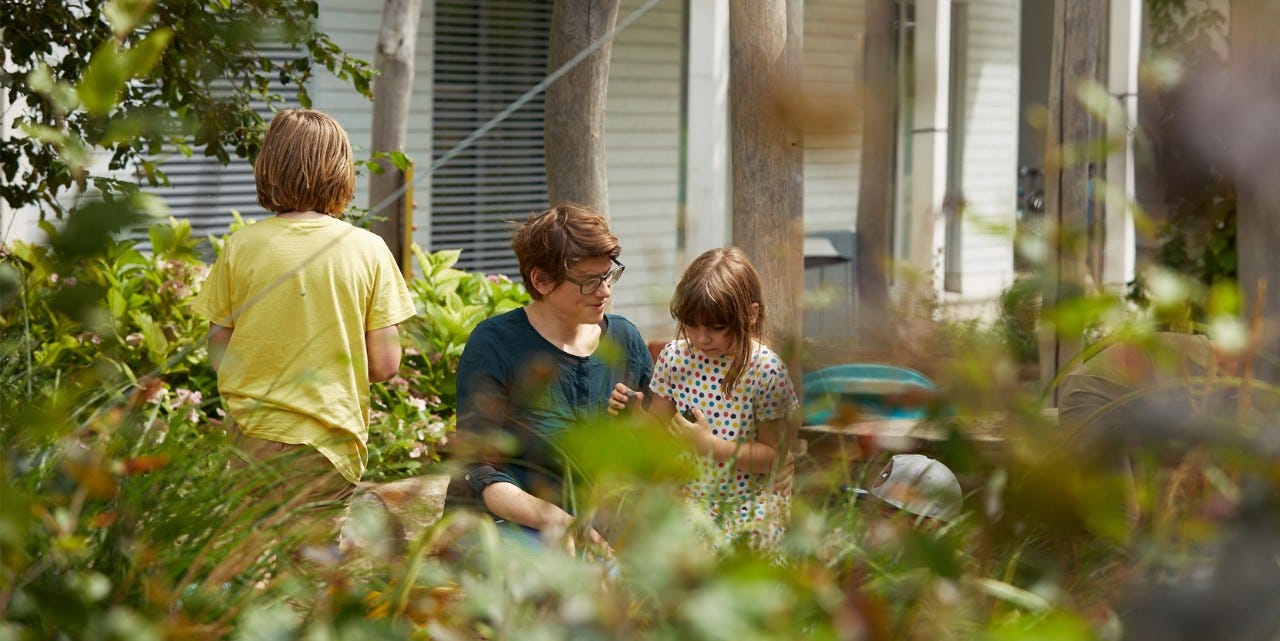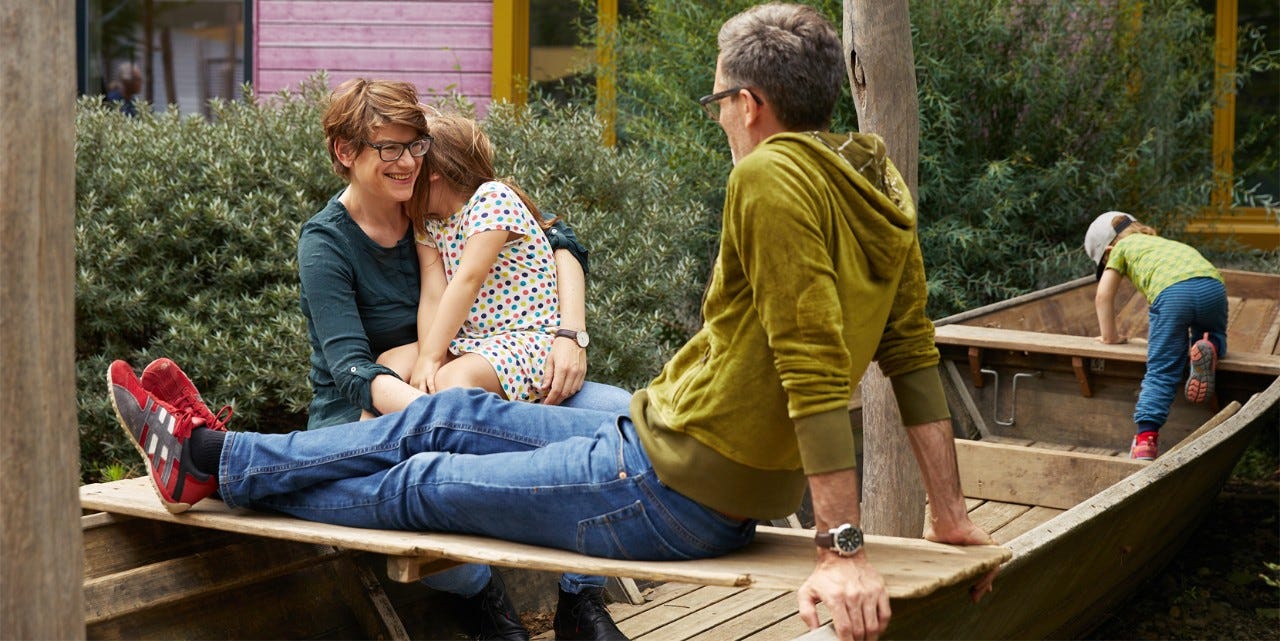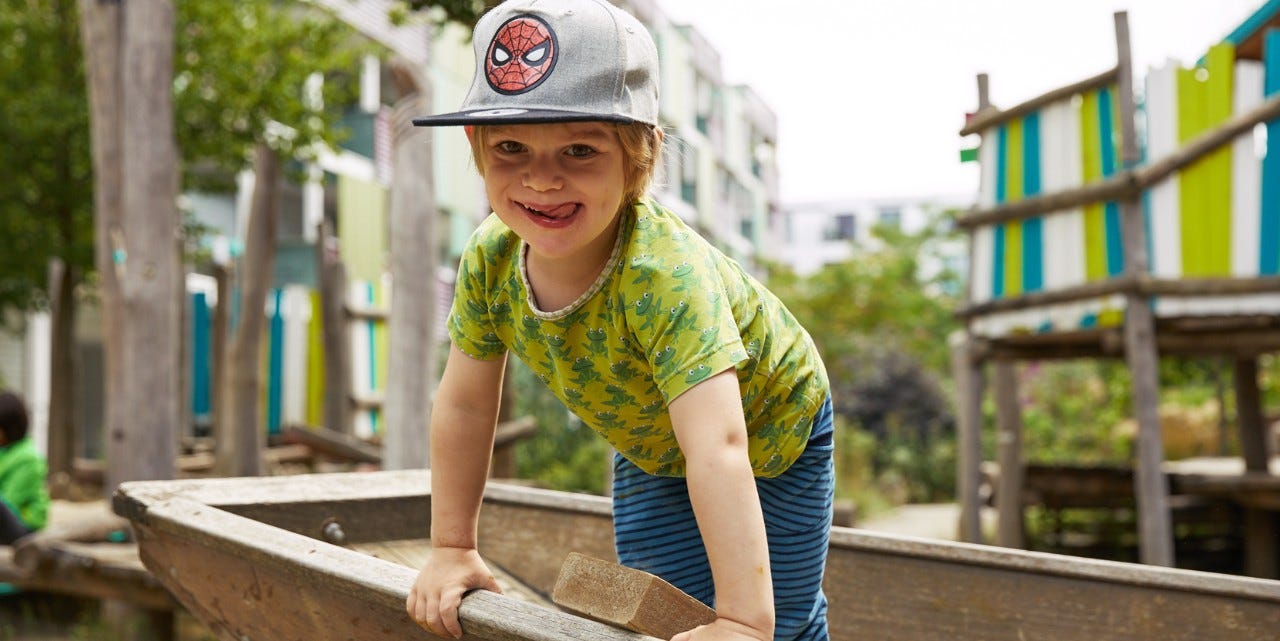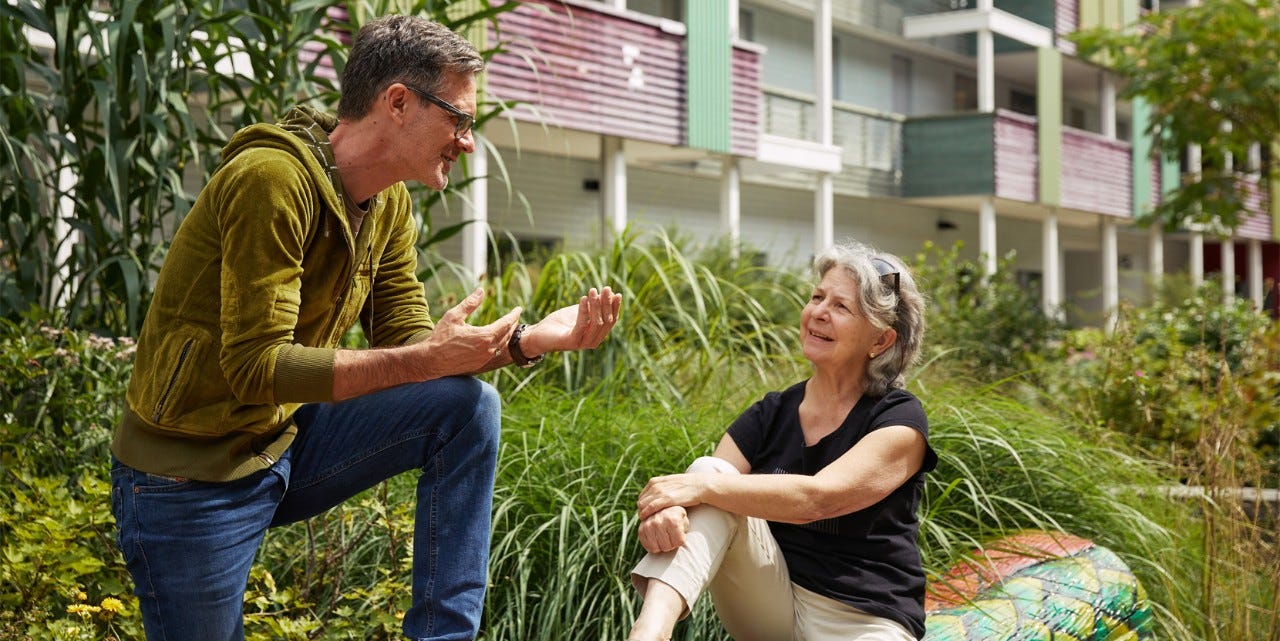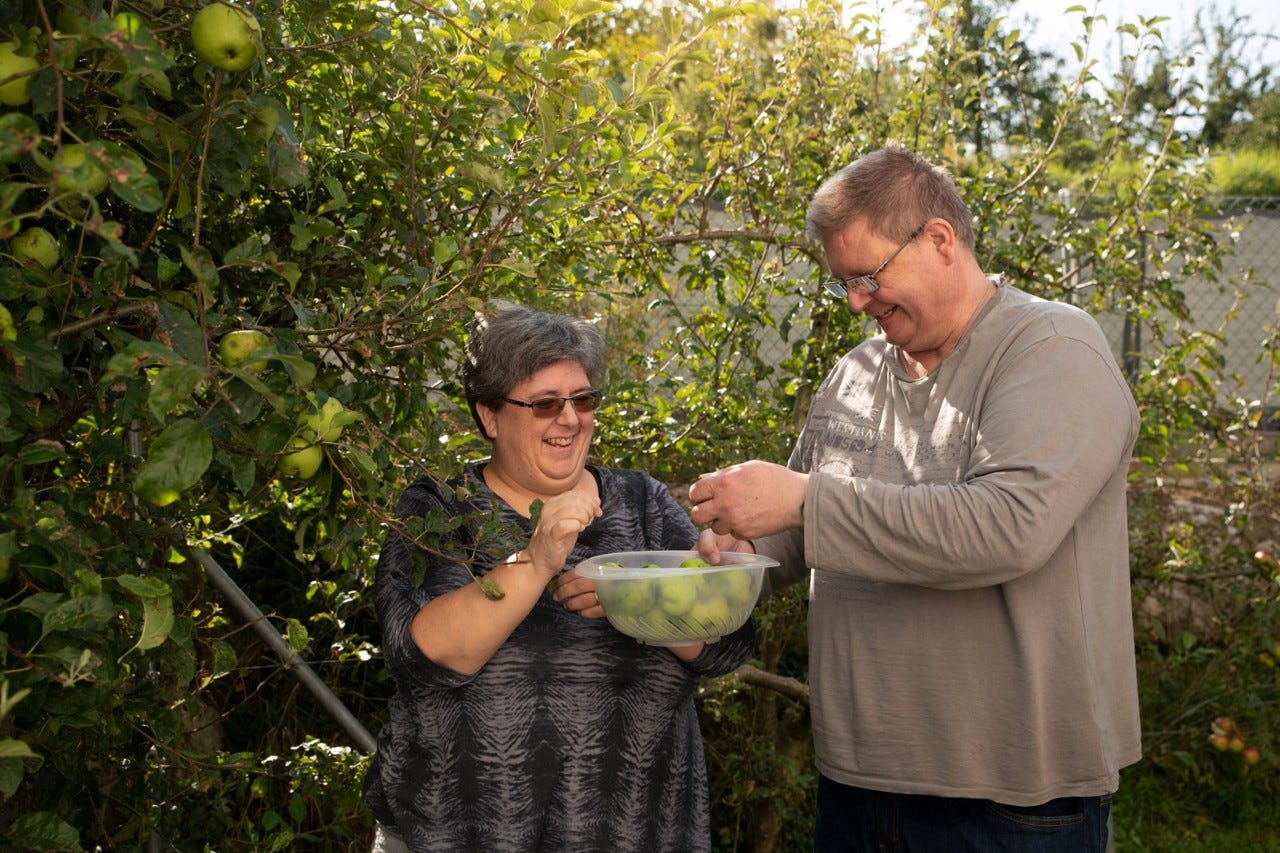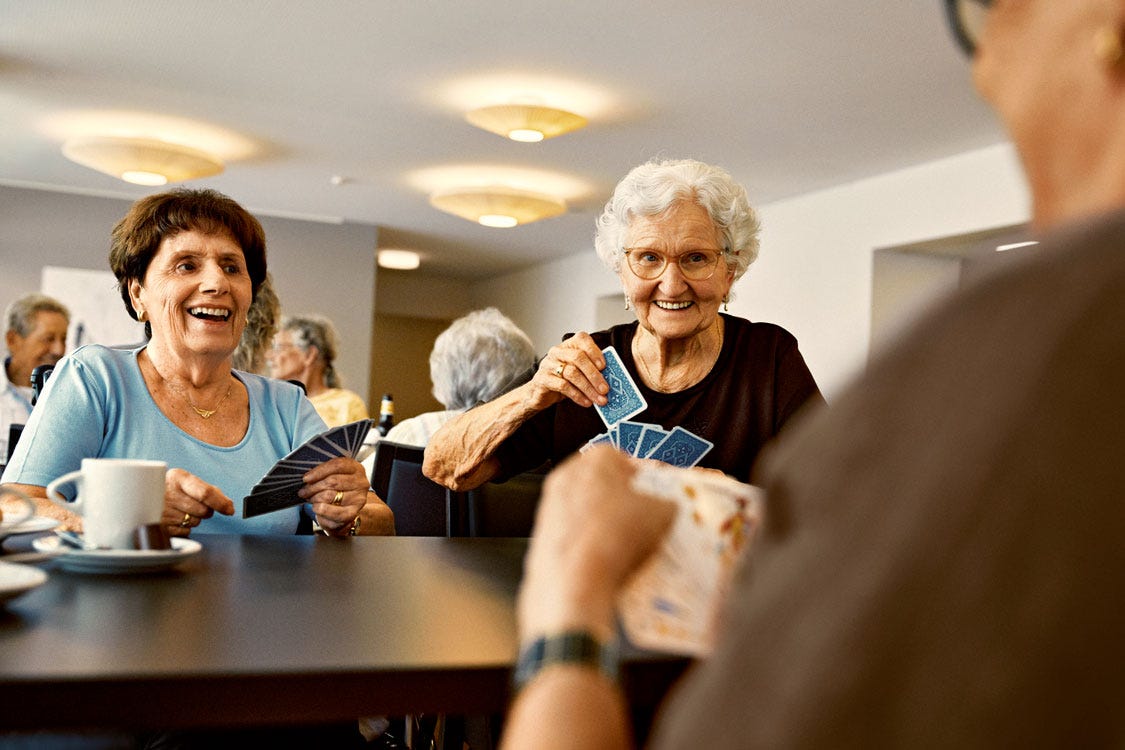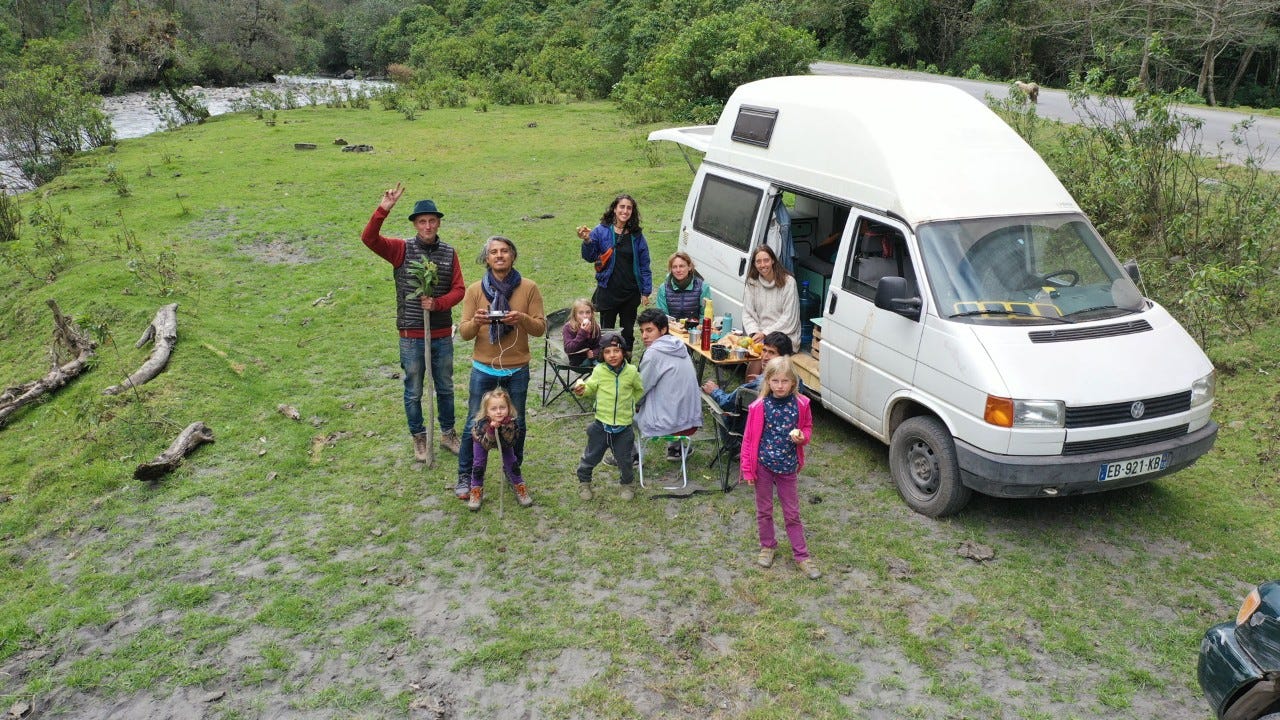Multi-generation house: Never lonely
In Winterthur, 350 people live in a self-managed “multi-generational house”. Three of them explain how it works.
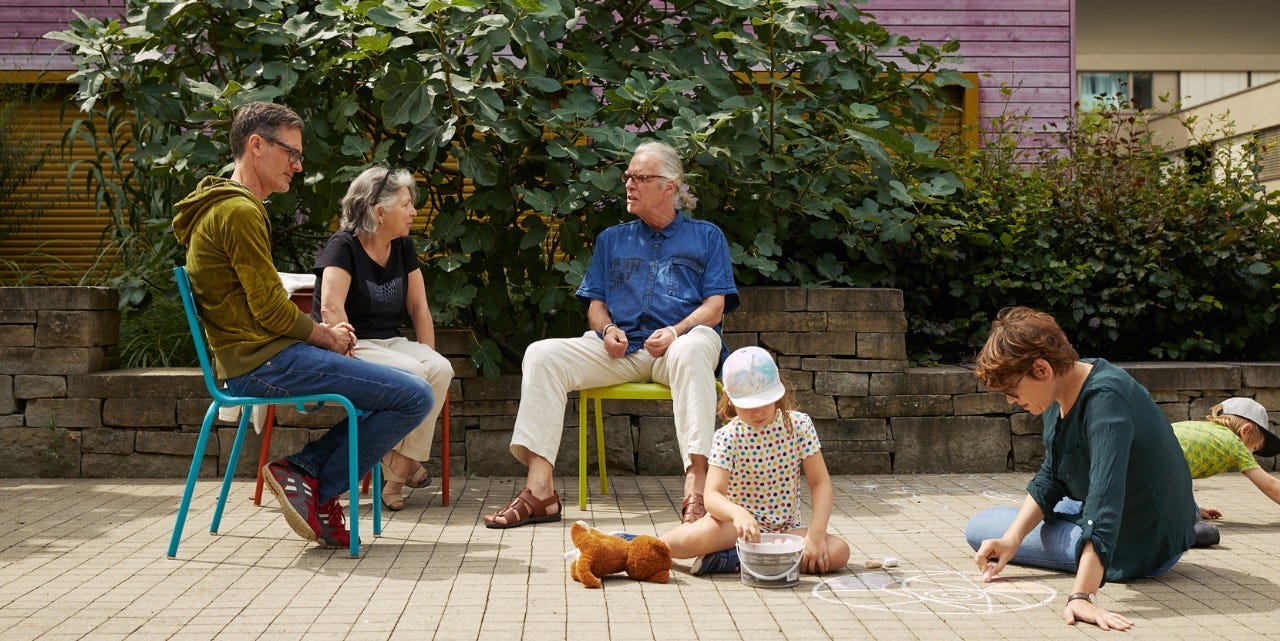
When you enter the inner courtyard, you are instantly in your own world. The huge area, surrounded by the six-storey red wooden houses, is divided into three areas: the “village square” with a home-made oak fountain, which on hot days becomes a pool for young and old alike; a playground for the children with a wooden ship, climbing frames, an awning and sand pit; and a meeting point for everyone else to relax with a long table and shady pergola. Trees grow all around, an apple tree, a fig tree, roses blossom, lettuces sprout in the children’s vegetable patch it’s a green oasis.
Hans Suter greets two women who are helping small children decorate the paving stones with chalk, and some girls who are enjoying their free afternoon. Everyone knows the tall man with his beige crochet cap and white ponytail. The 72-year-old likes to call himself the "instigator" of the cross-generational housing project in the Winterthur "Giesserei". Together with his wife and daughter, the architect had already lived in a similar settlement in Toggenburg, although it was much smaller. Once his daughter had grown up and was ready to fly the nest, he decided to move to Winterthur, because he’d always liked the city. In his studio on Ida-Sträuli-Strasse, Hans explains that, although he enjoys peace and quiet and the opportunity to withdraw, he also likes being with friends and good acquaintances.
Expensive XXL project
Suter finally found the perfect place in the old Giesserei (foundry), where he was able to realise his vision of a multi-generation house. A giant project that cost over 83 million Swiss francs and could only be realised with the support of the cooperative for self-managed living (Gesewo), it accommodates more than 350 people living in 150 apartments on 11,000 square metres. It also features various common areas, such as a room suitable for both parties and the general meetings, three workshops, and several wash bars, which, unlike conventional laundry rooms, are designed to encourage users to stay and chat.
“Straight away we could feel the incredible energy that was here, and we were really drawn to it.”
The first tenants moved in in 2013. Today, applicants sometimes have to wait over two years for an apartment to become available.
Christian Schaad joined with his partner Franziska von Grünigen and their two young children three years ago. The family were living in Winterthur and had stumbled across the inner courtyard of the "Giesserei" by chance on a day out: “Straight away we could feel the incredible energy that was here, and we were really drawn to it,” says the teacher who also rents out film equipment on the side. A charming encounter and no more, he thought. But when the family decided to move house in 2016, they came across an empty six-and-a-half-room apartment in the Giesserei by chance. With a monthly rent of CHF 2,670 including ancillary costs plus a compulsory loan of CHF 86,000, the family was able to afford it.
Compulsory hours for the common good
As luck would have it, they met the criteria for admission to the multi-generation house, which are laid down in a large catalogue. At the age of 45 and 38, they fitted into the age structure, as a family with two children they were entitled to a large apartment, they didn’t own a car and very importantly the parents were prepared from the outset to work around thirty compulsory hours per year to the benefit of the community. Christian Schaad, for example, is involved in the settlement’s cultural life and takes care of the website and cultural calendar. Others manage the common rooms or clean the stairwells. Anyone who is ill for an extended period or has too much work can “buy themselves out” for CHF 20 per hour, with the money flowing into the community fund.
Exchange welcome
If you ask Christian Schaad what he thinks of conventional living, he laughs: “Today this blinkered approach seems downright absurd.” People are primarily concerned about having no contact with their neighbours. “Here, the balconies are not only free of partitions, but are also deliberately connected to each other, thus inviting a real exchange of ideas.” He also likes the fact that different generations live together. He points to Isabelle Sorbé, the final member of our group, and says: “I remember my kids planting lettuce with Isabelle last summer.”
The 69-year-old, one of the first residents, picks up the conversation and tells us how a young father helps her out with her computer problems in return for occasional babysitting. “In the Giesserei I really experience a feeling of solidarity, also in the way that people, who tended to be on the margins of society, are able to integrate or how we a total of 20 nationalities have learned to get along well with each other over time. “To encourage a sense of community between neighbours from Iran, Pakistan, Mongolia, Congo, Italy, Germany and Switzerland, there are always parties taking place to which everyone brings specialities from their national cuisine.
Video: Life in the foundry
“A village of ordinary people”
The housing project, which also includes a nursery, pub and medical practice, reminds Christian Schaad of “a village made up of ordinary people who sometimes have conflicts, but who are dedicated to living in a community and sharing a lot with each other.” He and his partner really appreciate the two Whatsapp family chats, where everything is negotiated from borrowing nappies in an emergency to Piccolini lunches for the youngest family members. Hans Suter agrees: “We have open, very communicative and socially committed people living here, and perhaps a consequence of this mixture significantly more women (60%) than men.”
But even these women and men sometimes need privacy and the opportunity to withdraw. Isabelle Sorbé nods. After an illness two years ago, she’d felt the need to spend more time than usual within her own four walls for a few months: “It wasn’t a problem. Although,” she laughs and hesitates for a couple of seconds, “I sometimes felt guilty.” She sighs: "In a community like this there is a certain amount of peer pressure. There’s no denying that.” The two men put her statement into perspective by emphasizing that such feelings are also a question of one’s own perception: “No one blamed you, Isabelle, for being less around less back then.”
Christian Schaad admits that a self-governing project like their house only works if a large proportion of voters take part in the grassroots democratic discussions. It is important to organise into working groups and to attend the general meetings, of which there are six a year. They are more than satisfied with the average of 100 participants, which corresponds to two-fifths of the voters: “This means that a huge proportion of our residents are active.”
